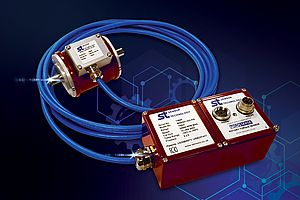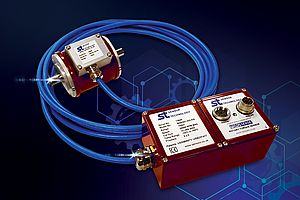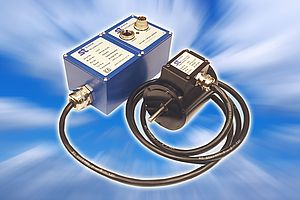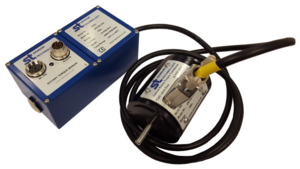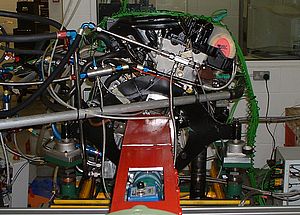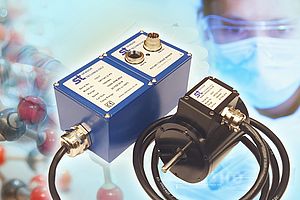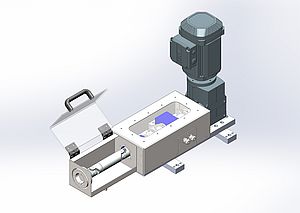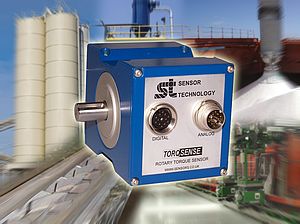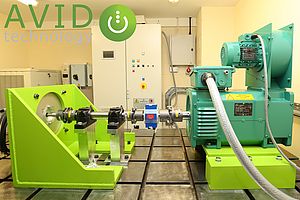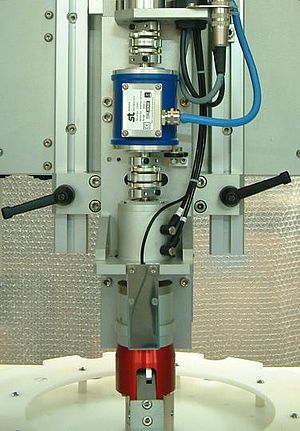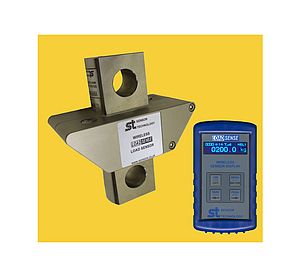Measuring torque on rotating shafts on a test rig is one thing, but the environmental challenges of real world applications can quickly impact on the functionality and reliability of torque transducers, as Mark Ingham of Sensor Technology explains. There are many approaches for measuring torque, from the simple to the more exotic, and under benchtop conditions or in less arduous applications they can all provide reliable results more or less out of the box. But out in the real world or on heavier duty systems, conditions are rarely ideal.
So how do the different technologies fare, and what can the user do to mitigate the problems?
Consider, for example, heavy duty applications in marine, agricultural, renewable energy, offshore and materials handling industries, as well as more specialist or exotic sectors such as aerospace or Formula 1. The torque sensor may well have to deal with dust, dirt, condensation, extremes of temperature, vibration, and more. In addition, we always have to consider the effects of electrical noise and electromagnetic interference in the environment. Any or all of these can quickly impact on the reliability and accuracy of the output torque data, as well as reducing the working life of the instrument. Let's consider, then, torque measurement instruments built on the most widely used principles - strain gauges, phase measurement, magnetism and surface acoustic waves - and see how they compare in these challenging environments. A quick recap first on the different torque measurement principles. The strain gauge is a torque sensor that is bonded directly to the shaft, with connection to the signal conditioning unit using either slip rings inductive coupling. Where slip rings are used, contact is made via brushes. Where inductive coupling is used, either a rotary transformer or radio telemetry can be employed. In a rotary transformer arrangement, either the primary or secondary coils rotate with the shaft. In a radio telemetry system, a stationary antenna induces power in the loop antenna of the rotating shaft, powering the strain gauge transmitter.
The strain gauge information is encoded as a frequency modulated signal. A stationary coil placed nearby picks up the signal and feeds a decoder. Phase measurement techniques can be built around various different sensor technologies, including optical, proximity and displacement. The principle is similar for each: if sectioned or toothed discs are mounted at either end of the shaft, offset from one another, then the relative movement of the two discs is proportional to torque and can be detected. Torque measurement systems built around optical sensors can also provide a useful solution. If sectioned discs are mounted at either end of the shaft, offset from one another, then the relative movement of the two discs changes the effective aperture in a way that is proportional to torque. With no susceptibility to electromagnetic interference and noise, the optical technique can provide a useful method of torque measurement. Capacitive sensors can also be used, in a device that measures the change in capacitance as the twisting shaft changes the gap between two charged plates. Magnetic measurement techniques are built on the principle of changes in magnetic field of a material as it twists.
The resulting changes in magnetic field are proportional to the applied torque, and can be measured by magnetic field sensors, enabling the torque value derived. A relatively new technology for the measurement of torque in a rotating shaft is that using the properties of surface acoustic waves, measuring the resonant frequency change of surface acoustic wave (SAW) devices in a non-contact manner when strain is applied to a shaft to which SAWs are fixed. The applied torque causes a deformation of the quartz substrate of the SAW device, which in turn causes a change in its resonant frequency. Such devices have been pioneered by Sensor Technology in its TorqSense range of products. In these products, two SAWs made of ceramic piezoelectric materials containing frequency resonating combs are glued onto the shaft at 90 degrees to one another. As the torque increases, the combs expand or contract proportionally to the torque being applied. An adjacent RF pickup emits radio waves towards the SAWs, which are then reflected back.
The change in frequency of the reflected waves identifies the torque. There is no need to supply power to the SAWs, so the sensor is non-contact and wireless. So how these different technologies stand up to the problems of the most demanding environmental conditions? Vibration Let's consider vibration first, because in high speed or high torque applications vibration is always likely to be a significant problem. At high speeds, even the best aligned shafts will exhibit a degree of vibration, whilst in the heaviest duty tasks the very nature of the application is going to lead to vibration. It goes without saying that we should aim to mitigate the problem of vibration in the first instance through careful shaft alignment, mounting on rubber bushes, etc. After that, we need to look at the intrinsic levels of immunity of the technology in question to the problem. Strain gauges: Where slip rings and brushes are used, excessive vibration can quickly cause wear, which will quickly impact on the reliability of the output and lead to premature failure.
In radio telemetry products, maintaining the correct antenna gap is critical, and excessive vibration can impact on this.
Phase measurement: Reliable operation depends on accurate alignment of the discs and sensors. If vibration causes any shift in position of the sensing elements within the transducer, the reliability of the output is compromised.
Magnetic: Relatively immune to the problem of vibration.
Surface acoustic wave: Excellent resistance to mechanical vibration. Temperature Extremes of temperature are a characteristic of numerous real world applications, in applications such as wind turbines, aggregates conveyors, bulk materials handling applications, agricultural machinery and more. Even in fairly benign climates, it might not be unusual to see temperature swings from below zero to above, say 30°C, and in a busy marine engine room, for example, temperatures could easily get even higher.
Strain gauges: Relatively immune to changes in temperature, although large swings can cause condensation which can impact on the electrical connections of slip rings and bushes, as well as promoting corrosion. Phase measurement: Critical disc tooth or aperture dimensions can change with temperature, impacting on the reliability of the torque reading.




